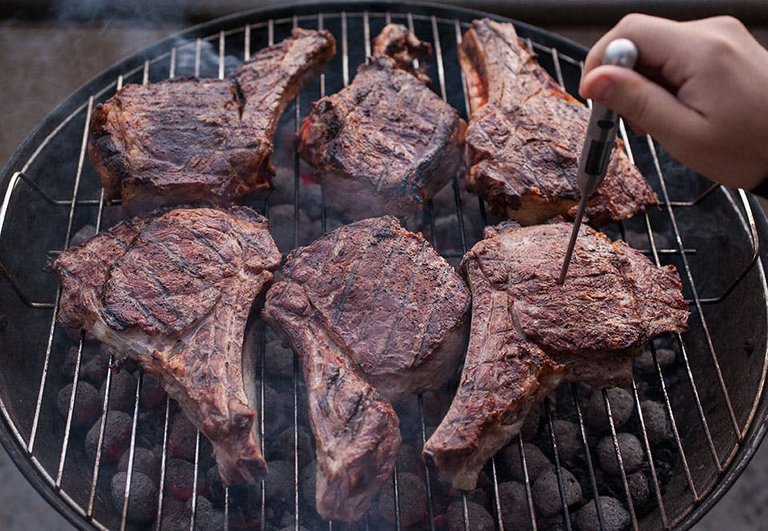
A caramelized steak surface is a matter of pure chemistry and a bright pink interior is about muscle proteins. We give you the scientific tricks you need to cook the best barbecue grill in the summer.
1. Play with the meat's chemistry
.gif)
Want to get compliments for your crispy caramelized surface? Then you will learn the Maillard reaction.
Temperatures above 140 ° C allow amino acids from proteins to react with carbohydrates in the meat and create a variety of full flavor shades.
In the video from Scientific American you can see which topics are giving taste.
The Maillard reaction ends in so-called ketoamine molecules - the starting point for up to 100 flavors and a pair of brown shades.
Therefore, the surface of the steaks should be heated to 140-165 ° C to be caramelized.
2. Wipe your meat

Whether you throw stews or chops on the grill, you will get a crispy frying surface faster if your meat has a dry surface.
If the meat swims in its own juices, the water will steal all energy until it has evaporated.
Therefore, many cooks are applying the trick to wipe the meat with household paper or salt and put them in the fridge overnight - so they begin to burn at the same moment you put them on.
3. Divide your grill into two

You expose the meat to two kinds of heat in a grill: direct heat and indirect heat - where you balance the temperature in large pieces of meat.
Texture and taste change when proteins in the muscle tissue change shape while they are warming up. Two of them are myosin and actin, which are destroyed at about 49 and 66 ° C respectively.
We prefer the flavor that occurs when myosin, but not actin, breaks down, tells the engineer and cookbook author Jeff Potter for livescience.
Therefore, most of the meat's internal temperature is above 49, but below 66 ° C.